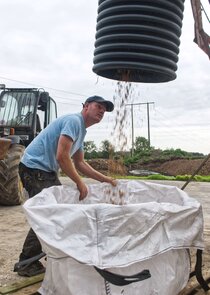Caomhnóirí na Talún

Sinopse
In Caomhnóirí na Talún, we follow five farmers over the course of a year as they farm with nature. From an extensive suckler farm on Inis Mór island to the karst beauty of the Burren to the dairy heartland of east Cork, our cameras follow as these farmers create and conserve habitats on their farms, pioneer new ideas and try to find a way to protect wildlife and their living.
Across the country we've seen catastrophic declines of birds, wild bees and native plants. Even once common birds of our farmland and open countryside like the skylark and kestrel, are now in deep trouble. The intensification of farming and forestry directed by policy and payments over decades, is seen as one of the most significant contributors to these losses - as land use changed, as wetlands and bogs were drained and reclaimed, as pesticide use and chemical fertiliser increased or as grass management changed such as the switch from hay meadows to silage. As more and more land was brought into production, there was less and less space for wildlife. Yet if biodiversity is to improve, if habitat loss can be reversed or even halted, it is across Irish farmland that change will happen. If it's to happen, farmers are the ones who will turn this crisis around. And across the country there's a growing number of farmers who are forging that path and farming with nature.
Over the course of a year, our cameras follow five of these farmers as they create habitats like ponds, nettle patches or bee scrapes on their farms. As they let their hedgerows grow, blossom and fruit. As they discover treasure in the fields. As they adopt new farming techniques like mob grazing or no-till to regenerate soil on intensive ground. Or as they keep faith with traditions such as the winterage [winter grazing] that maintain the wildflower beauty of landscapes like the Burren and the Aran islands. All while trying the find a balance between nature and the realities of making a living from farming.
Informações
- Status: Em exibição
- Estréia: 04/09/2024
- Próximo Episódio: Indefinido
- Emissora:
 TG4
TG4 - Duração do Episódio: 30 minutos